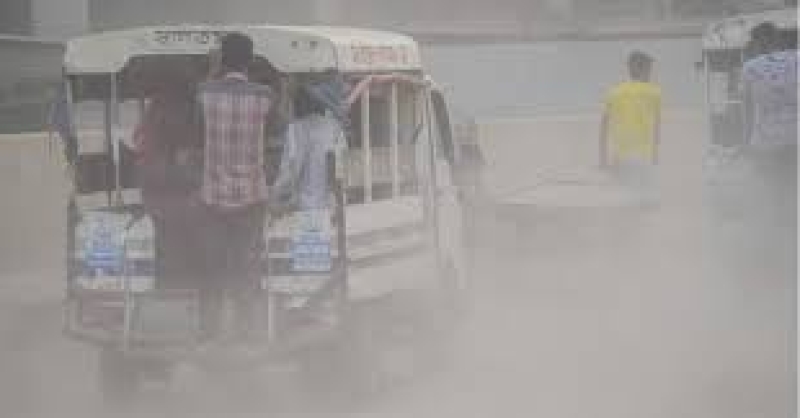- No Media Faced Arson Attacks in 53 Years: Mahfuz Anam |
- Janaza of six Bangladeshi peacekeepers held at Dhaka Cantonment |
- Bangladesh stock market loses Tk 10,500cr in a week |
- Dhaka’s air turns ‘very unhealthy’ on Sunday morning |
- Project to transform N’ganj into a climate-resilient green city |
Dhaka’s air quality ‘unhealthy’ Friday morning

Air pollution in Dhaka City on Friday.
Dhaka, Jun 7 -Dhaka, the overcrowded capital city of Bangladesh, has ranked fifth on the list of cities with the worst air quality with an AQI index of 151 at 9:10am this morning (June 7, 2024).
Today’s air was classified as 'unhealthy', though yesterday‘s air quality was considered as moderate with an AQI index of 92, according to the air quality index.
When the AQI value for particle pollution is between 50 and 100, air quality is considered ‘moderate’, usually sensitive individuals should consider limiting prolonged outdoor exertion, between 101 and 150, air quality is considered ‘unhealthy for sensitive groups’, between 150 and 200 is ‘unhealthy’, between 201 and 300 is said to be 'very unhealthy', while a reading of 301+ is considered 'hazardous', posing serious health risks to residents.
India’s Delhi, Vietnam’s Hanoi and Indonesia’s Jakarta occupied the first, second and third spots in the list, with AQI scores of 411, 174 and 163, respectively.
The AQI, an index for reporting daily air quality, informs people how clean or polluted the air of a certain city is and what associated health effects might be a concern for them.
The AQI in Bangladesh is based on five pollutants: particulate matter (PM10 and PM2.5), NO2, CO, SO2, and ozone.
Dhaka has long been grappling with air pollution issues. Its air quality usually turns unhealthy in winter and improves during the monsoon.
As per World Health Organization (WHO), air pollution kills an estimated seven million people worldwide every year, mainly due to increased mortality from stroke, heart disease, chronic obstructive pulmonary disease, lung cancer, and acute respiratory infections. - UNB

